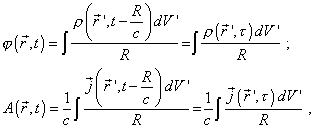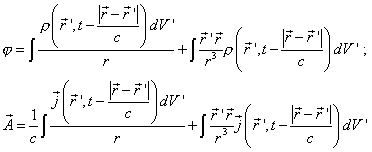| V.1 | 15 - 16 -17 |
| On longitudinal electromagnetic waves | |
|
|
| 15On longitudinal electromagnetic waves
Chapter 1. Lifting the bans S.B. Karavashkin Special Laboratory for Fundamental Elaboration SELF 1e-mail: selftrans@yandex.ru , selflab@mail.ru First published in SELF Transactions, 1 (1994), pp. 15- 47 |
|
| Abstract
This is the initial version of an introduction chapter of a monograph devoted to the theoretical and experimental proof of the longitudinal electromagnetic waves existence. This chapter proves that the known Maxwell divergence equation works correct only in stationary fields. Its form for dynamical fields is derived. Some typical inexactitudes having led the scientists to the conclusion that the energy does not propagate in the near field are shown, and the contradictions between the Ampere law and Lorenz equation for dynamical magnetic fields acting on a charge are considered as well. As the supplement to this paper, the author published the Review to the primary experiment on radiation and reception the longitudinal EM wave demonstrated by S. B. Karavashkin Keywords: theoretical physics, mathematical physics, wave physics, vector algebra, electromagnetic theory, dynamical potential fields. Classification by MSC 2000: 76A02, 78A02, 78A25, 78A40 Classification by PASC 2001: 03.50.-z; 03.50.De; 41.20.Jb; 43.20.+g; 43.90.+v; 46.25.Cc; 46.40.Cd |
|
| The subject of this work seems senseless to many scientists, because we all undoubtedly think a wave in free space exceptionally transversal. However, for all external harmony of the wave theory, far from all is just like it seems in electrodynamics. I would not like to shock the readers beforehand, but at due times not so much scientific but political and pure moral aspects played a principal part in considering the nature of EM waves. This was caused first of all by the fact that since the time of theoretical substantiation of possibility of EM waves propagation, the field theoreticians were involved in the old heated controversy of the nature of matter. Should the possibility of longitudinal waves propagation be proved in this controversy, the "emptiness" of space would be filled with the matter and, being a great relativistic stake (up to now), would disable them formulating the basic postulates of the entire Relativity - the light velocity independence on the reference frame. But postulating the absence of longitudinal waves, it would be much easy to explain the series of negative experimental results obtained for the light velocity measuring. 16They obtained an unstable balance that finally yielded to deny the longitudinal waves, not so much because of evidence but actually rather of comfort. Because an attentive consideration would clear that, ignoring the idea of longitudinal waves, the scientists have overlooked so obvious phenomena that it cannot be understood otherwise than the reason of comfort. To prove it, let us analyse the link of computations making us concluding EM waves pure transversal. Consider first an issue of EM field potentials. EM radiation is known to be a resultant of irregular motion of charges in some limited area of space. According to [1, p. 87] and noting the lag, the potential equations have the following form: |
|
|
(1) |
| 17 where |
|
|
(2) |

